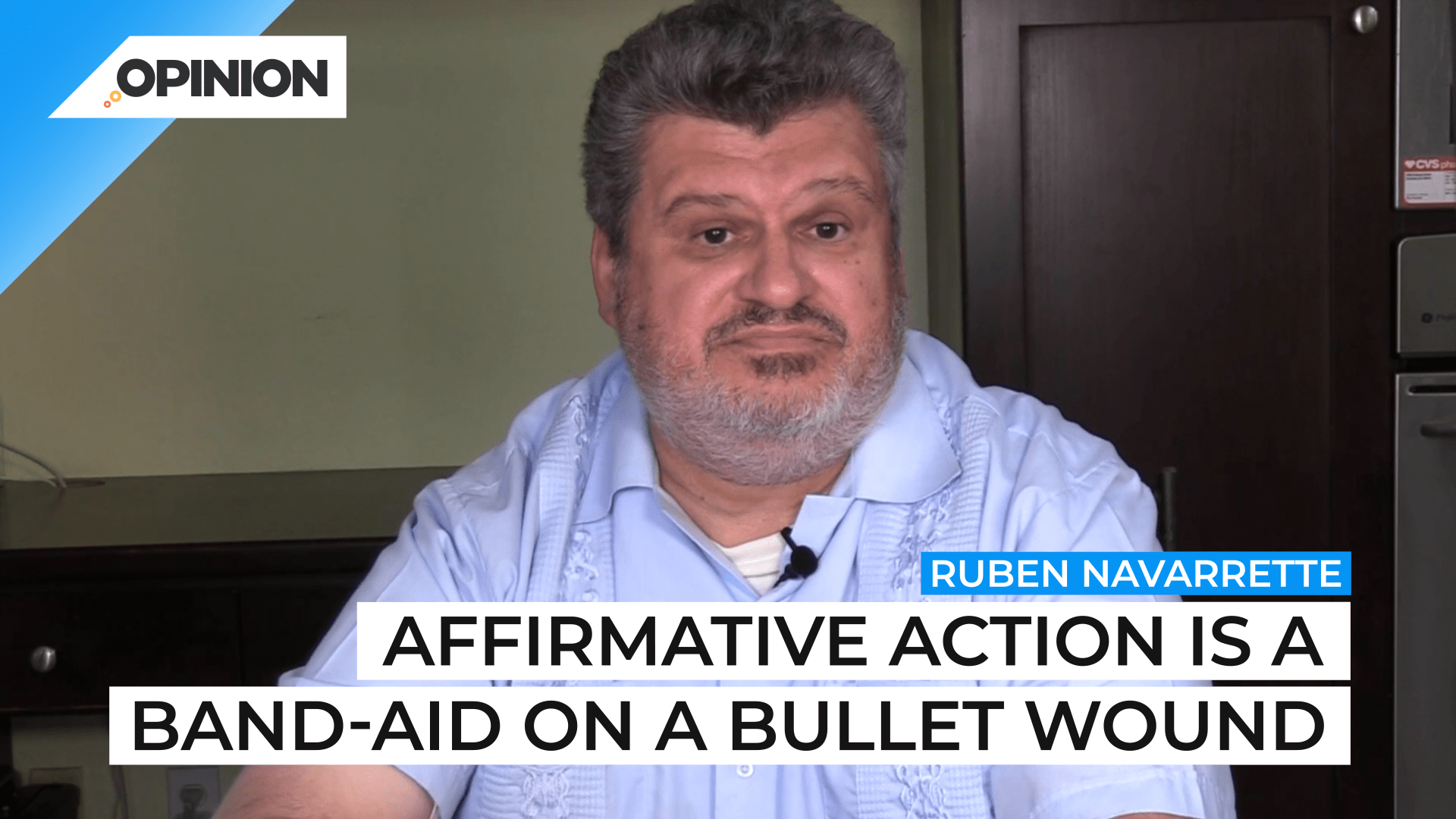
Commentary
-
Our commentary partners will help you reach your own conclusions on complex topics.
New Rule. White men are not allowed to talk about affirmative action. Not ever, unless they know what the heck they’re talking about. Most don’t. But that doesn’t stop them, of course from spouting off about a topic that they don’t fully understand. In the nearly 40 years that I’ve discussed and written about preferential treatment of college admissions, as opposed to an employment or government contracts, I’ve heard white men spin some fantastical yarns.
Affirmative action is not “reverse discrimination” as they claim. Nor is it part of some massive conspiracy to oppress white men. Affirmative action does not amount to admitting people to college based on race or ethnicity alone. And nor is a kind of cosmic bureaucratic payback for past sins.
Expect to hear more madness in the weeks and months to come. The Supreme Court recently heard arguments in the case, Students for Fair Admissions v. President and Fellows of Harvard College. Plaintiffs accused Harvard of discriminating against Asians. Rubbish. Asians made up 25.9% of the Harvard class admitted in 2021.
White conservatives such as radio host Hugh Hewitt, say Harvard wants to “limit the upward mobility of Asian Americans via the imposition of caps on their admission.” More rubbish. Harvard is a private institution. It’s allowed to make decisions on what it wants its student body to look like. If it decides it doesn’t want a student body that’s 70% Asian, or 70% Latino or 70% Black, for that matter, that’s fair enough. That’s its right.
Two lower federal courts have already ruled in Harvard’s favor, and the amicus briefs submitted on the university’s behalf, included one from the Asian American Legal Defense and Education Fund. It rejects the idea that affirmative action hurts Asians and claims that race-neutral admissions “ultimately benefits white applicants.”
Let’s back up a beat and define affirmative action…that I should describe my personal history with the concept. Affirmative action is more than 60 years old. It was on March 6, 1961, that President John F. Kennedy signed Executive Order 10925. It required that U.S. government contractors take “affirmative action to ensure that applicants are employed, and that employees are treated during employment without regard to their race, creed, color, or national origin.”
Americans have argued about the concept ever since. Three times over the last six decades, the Supreme Court has given colleges and universities permission to take the race ethnicity of applicants into account, as long as it’s just one factor among many in the admissions process.
In 1978, in Regents of the University of California v. Bakke, the justices struck down a quota at UC-Davis Medical School, but said race could be considered. In 2003, in Grutter v. Bollinger, the Court upheld the admissions policy at the University of Michigan Law School. In 2016 in Fisher v. University of Texas, the justices decided it was okay for UT-Austin to consider race and mission.
My own personal relationship with affirmative action goes back to the fall of 1984, when I was a 17-year-old high school senior. As a Mexican-American with perfect grades and advanced placement courses, I was accepted by five elite universities, including Harvard, which I would eventually attend. This inspired white friends whose grades weren’t as good as mine, to tell me that I would not have been admitted had I not been Mexican.
For a long time I stood by affirmative action, maybe out of loyalty, but over the last 20 years, not so much. Gradually, I’ve become convinced that when applied to0 aggressively, a program that was intended to benefit Latinos and African-Americans can actually hurt them. It labels beneficiaries as unqualified, lowers academic standards, and masks the failures of the K-12 public schools to properly educate black and brown students.
Get it straight. Affirmative action is not an attack on whites and Asians. It’s a band-aid on a bullet wound. It’s time to pull off the bandage and heal the patient, once and for all.
-
No one is innocent in Trump assassination attempt
After the assassination attempt on former President Donald Trump, both Democratic and Republican leaders have called for reducing divisive rhetoric. Some Republicans blame the shooting on the language Democrats used in attacking Trump. Meanwhile, some prominent Republican lawmakers, such as Rep. Elise Stefanik, R-N.Y., have used similar rhetoric, calling Biden “a clear and present threat…
-
America must fix its broken Supreme Court
The U.S. Supreme Court was envisioned by America’s founding fathers as an independent judiciary separate from the political world, designed as a fair arbiter of the law. But the 6-3 conservative majority of today’s Supreme Court has issued a number of impactful, partisan and unpopular opinions on everything from abortion access to presidential power, triggering…
-
Despite Biden’s stumble, rambling Trump can’t win debate
The first presidential debate of 2024 resulted in what many believe was a clear winner and loser. President Joe Biden’s performance was universally panned, affecting his fundraising efforts and intensifying calls for his ousting. Meanwhile, former President Donald Trump, despite being criticized for his false claims during the debate, has kept a low profile, opting…
-
Why Republicans will never shut down US-Mexico border
A group of Republican senators expressed “grave concerns” to President Biden over his recent executive order that would provide a path to citizenship to approximately 500,000 people who have been in the country for a decade or more and are also married to United States citizens. The GOP lawmakers argued that Biden’s immigration relief “directly contravenes…
-
Why Democrats’ immigration playbook not working with Latino voters
In June 2012, as President Barack Obama campaigned for reelection, he ordered immigration enforcement agents to defer action against those who had arrived in the United States as children. This executive action, known as DACA, offered a path to work permits for hundreds of thousands of undocumented immigrants. That November, Obama cruised to reelection, beating…
Latest Opinions
-
 U.S. Department of Defense
U.S. Department of Defense
Congress still trying to figure out how to reduce wasteful military spending
-
 DVIDS
DVIDS
US Navy, Air Force making waves with new weapons at RIMPAC
-
 Getty Images
Getty Images
Israeli PM Netanyahu meets with Trump at Mar-a-Lago
-
 Getty Images
Getty Images
Growing US nuclear power resurgence reaches the nation’s heartland
-
 Getty Images
Getty Images
Beer from the sun, other solar thermal projects get government funding
Popular Opinions
-
In addition to the facts, we believe it’s vital to hear perspectives from all sides of the political spectrum.


